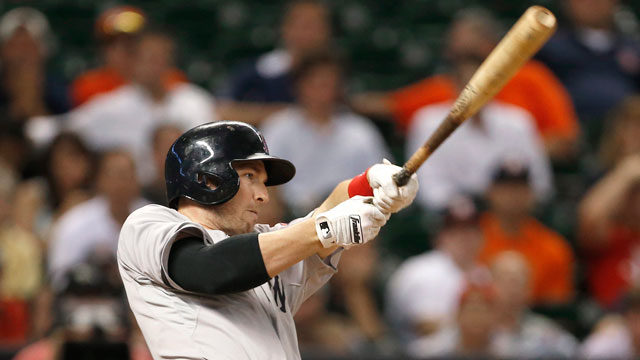It’s not a coincidence that five of the top free agents available are all linked to draft pick compensation. Any team hoping to sign Ubaldo Jimenez, Ervin Santana, Stephen Drew, Nelson Cruz or Kendrys Morales must be prepared to surrender a top draft choice, which frustrates players, agents and interested teams alike.
Yet the Toronto Blue Jays stand to benefit from the rules.
Both of the Blue Jays’ 2014 first round picks are protected, so instead of forfeiting a top pick, the Blue Jays would only give up their second rounder, the 49th overall selection. That makes a difference to Blue Jays GM Alex Anthopoulos, who says free agency has become “more appealing” as the off-season has progressed.
“It’s significant,” he says. “I think if we had to give up a first round pick, it would change things in a significant manner. I think that’s where the draft pick compensation component is impacting some of these clubs.”
Take a team such as the Los Angeles Angels. They could use pitching nearly as much as the Blue Jays, but if they signed Jimenez, they’d lose their 15th overall pick. That’s a much steeper price than the 49th overall pick, which is all Anthopoulos would have to surrender.
“There’s still value with a second round pick, because it’s still pretty high, so there’s still value and you still build that into an offer,” he says. “But it’s not close to the value of round one.”
No one has accused the draft pick compensation process of being simple, but here’s the short version of how it works. When a player hits free agency, his team must decide whether to extend him a qualifying offer valued at one year and $14.1 million. If the player obtains a qualifying offer and rejects it, he’s linked to draft pick compensation. That means his new team must surrender a first round pick to sign him. There are exceptions, though; teams such as the Blue Jays with top-ten picks surrender second round selections instead. Ostensibly in place to create competitive balance, the system also drags down free agent values.
That sets the Blue Jays up to benefit from reduced asking prices.
“The prices have changed, I think people would readily admit from what people thought they would get in October or November,” Anthopoulos says. “That’s stating the obvious there. I think every player and agent would say it’s changed”
Maybe so, though many agents caution that the Blue Jays’ wait-and-see strategy could backfire. While agents readily acknowledge that draft pick compensation affects their free agent negotiations, they counter that there’s only so much elite talent available. They argue that obtaining a player of Nelson Cruz’s caliber is well worth a draft pick that may well turn into a failed prospect — especially for a team that needs to improve like the Blue Jays.
Yet some teams resist that argument, preferring to keep their picks and the expanded draft budget that comes along with top selections. Angels GM Jerry Dipoto has publicly said he doesn’t intend to give up his 2014 first rounder, and others privately share his stance.
As long as those teams are ignoring the likes of Drew, Santana and Jimenez, the Blue Jays are poised to pounce on a market that has fewer bidders than it otherwise might. Could a position player like Drew be in play for Toronto at the right price? Sure, though there doesn’t presently appear to be active dialogue on that front. The Blue Jays say they are “open-minded” to the right fit in terms of years and dollars and would consider offering a position player a multi-year contract.
For now, the waiting game continues. The draft pick compensation system has provided the Blue Jays with an opportunity. Now it’s a question of whether they can turn it to their advantage and turn a forgettable off-season into a success.

